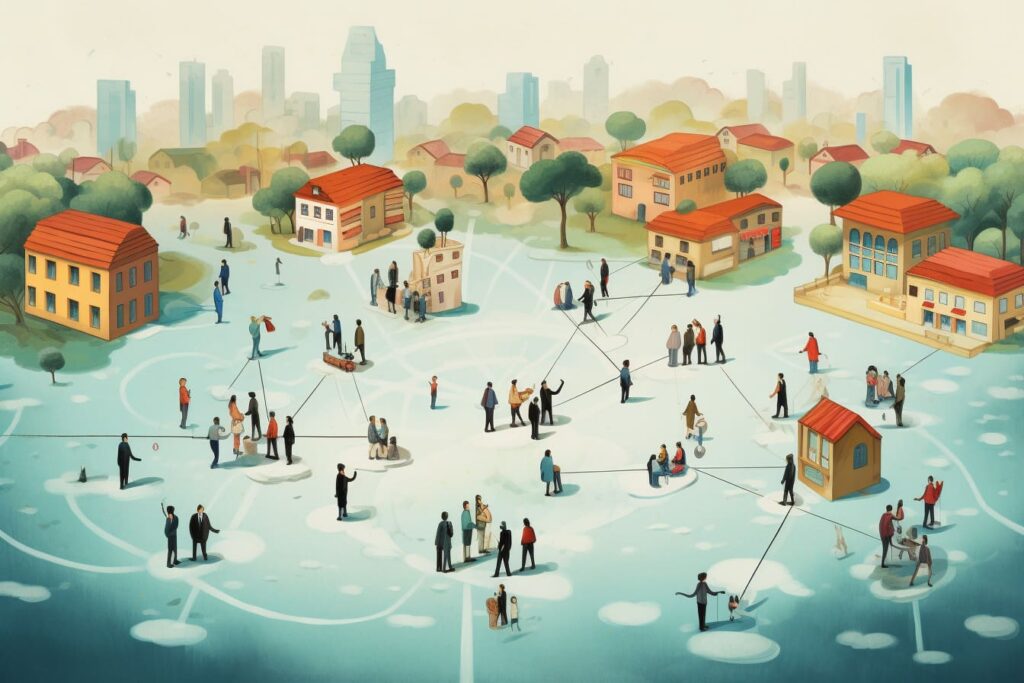A new form of governance is taking shape in the mystical realm of decentralized networks, where geeks and tech enthusiasts gather to weave their digital spells. No, it’s not a council of wizards or a parliament of binary beings. It’s something even more fascinating: community governance. And trust me, folks, it’s not as boring as it sounds.
Imagine a world where decisions are made collectively, power is distributed like free Wi-Fi at a coffee shop, and everyone has a say in shaping the future. Sounds like a utopian dream. Well, thanks to the wonders of blockchain technology, this dream is becoming a reality.
But hold your horses, my dear readers, because community governance is not just a fancy buzzword. It’s a powerful concept that has the potential to revolutionize the way we organize ourselves in the digital age. So, let’s deeply dive into this enchanting world and uncover the secrets of successful models.
The DAO: A Tale of Rise and Fall
Ah, The DAO (Decentralized Autonomous Organization). It was supposed to be the golden child of community governance, a shining example of how decentralized networks could transform the world. But alas, like Icarus flying too close to the sun, it crashed and burned.
The DAO was an ambitious experiment to create a decentralized venture capital fund. It allowed anyone to submit proposals and invest in projects using the native cryptocurrency, Ether. However, a vulnerability in its code led to a catastrophic hack, resulting in the loss of millions of dollars.
Lesson learned: While community governance empowers individuals, it also comes with its fair share of risks. Building robust security measures and learning from past mistakes are crucial for success.
Tezos: The Phoenix Rising from the Ashes
If The DAO was a cautionary tale, Tezos is the phoenix rising from the ashes. This blockchain-based platform took the lessons of its predecessors and built a governance model that is both flexible and transparent.
Tezos introduced a formal process for proposing and voting on protocol upgrades, giving token holders a direct say in the platform’s evolution. It also incentivized participation by rewarding token holders for their contributions.
Lesson learned: Effective community governance requires a delicate balance between participation and incentives. It can create a thriving ecosystem that constantly adapts and improves when done right.
MakerDAO: Steady as a Rock
In decentralized finance, MakerDAO stands tall as a shining example of community governance done right. This decentralized lending platform allows users to generate stablecoins by locking up collateral in intelligent contracts.
MakerDAO’s governance model is simple yet effective. Token holders can vote on proposals and delegate their votes to trusted representatives. This system ensures that decisions are made collectively while preventing the tyranny of the majority.
Lesson learned: Strong community governance is built on trust and transparency. Empowering individuals to make informed decisions and allowing for delegation can lead to a more inclusive and resilient ecosystem.
Now, my dear readers, as we end our magical journey through the realm of community governance, let’s ponder the lessons we’ve learned. Decentralized networks have given us a glimpse into a future where power is distributed, and decisions are made collectively. But like any great power, community governance comes with great responsibility. It requires constant vigilance, robust security measures, and a commitment to inclusivity.
So, whether you’re a tech enthusiast or just a curious soul, keep an eye on the evolving world of community governance. It’s a wild, exciting frontier promising a more democratic and equitable future. And who knows, maybe one day, you’ll find yourself casting your vote in a digital council meeting, sipping your virtual latte, and shaping the world from the comfort of your home. Stay curious, my friends, and let the magic unfold.

